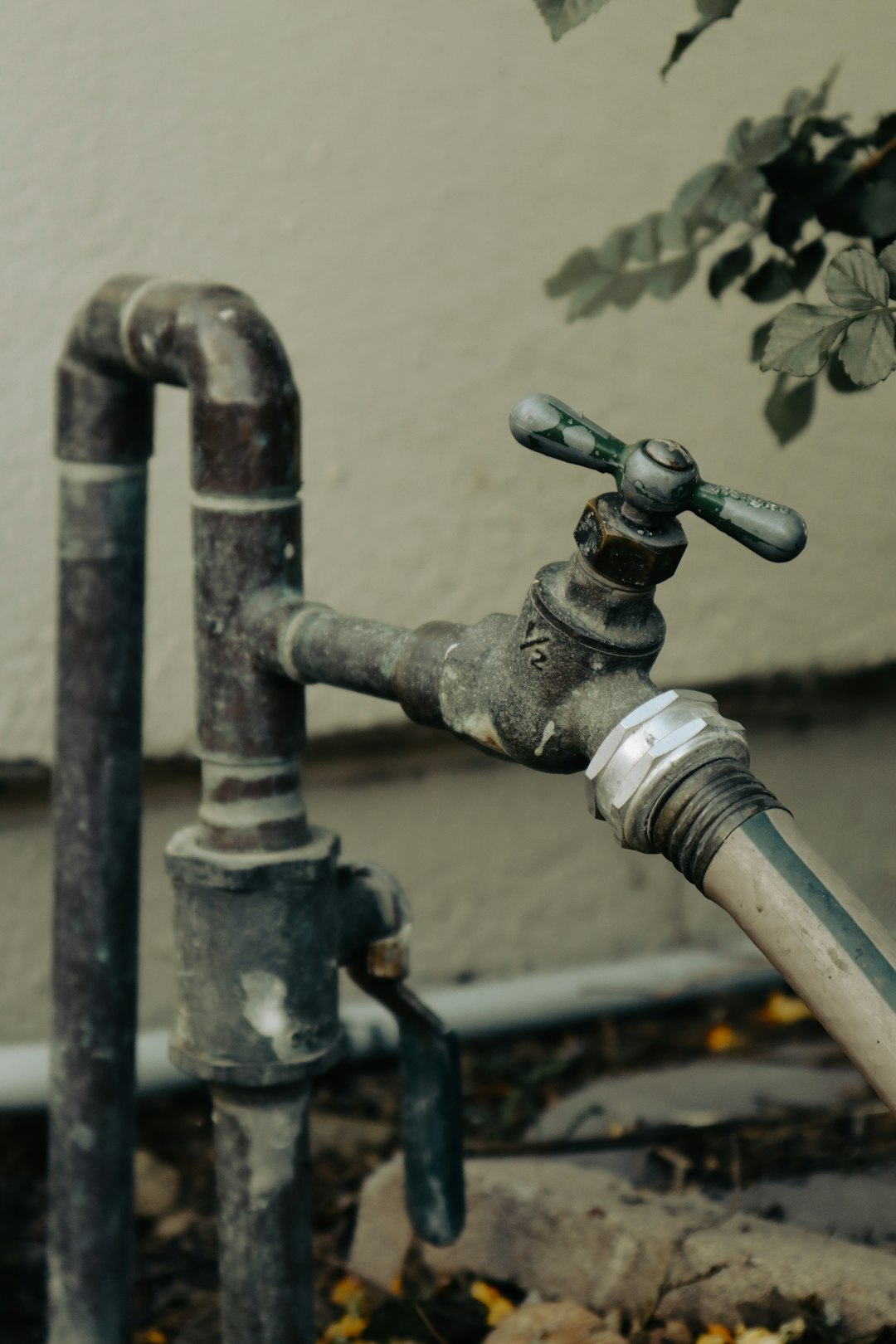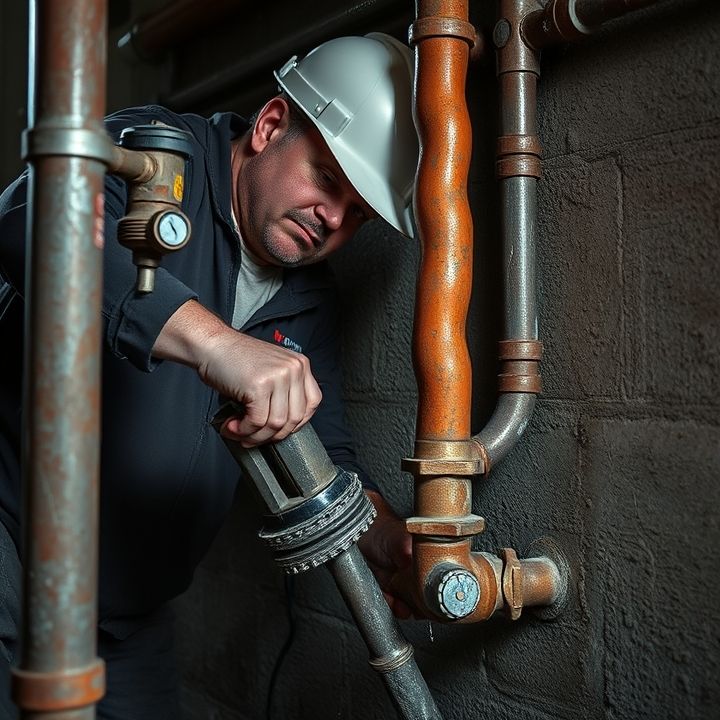Table of Contents
- Introduction
- Identifying the signs and symptoms of a slab leak
- Conducting plumbing leak detection using specialized equipment
- Deciding on the repair method: direct access vs. trenchless technology
- Performing plumbing pipe replacement for damaged lines
- Executing plumbing drain cleaning to remove obstructions
- Installing plumbing fixtures and valves as needed after repairs
- Implementing plumbing backflow prevention measures
- Providing plumbing emergency service and follow-up maintenance
- Conclusion
- Frequently Asked Questions
Introduction
Ever wondered what happens when pipes beneath your home’s foundation spring a leak? Slab leaks, those insidious culprits lurking beneath your feet, can wreak havoc on your property if left unattended.
In this article, we pull back the curtain on the intricate world of plumbing, revealing the expertise plumbers employ to diagnose and repair these challenging issues. From specialized tools to expert techniques, the art of slab leak repair is both an exact science and a craft honed over years of experience.
Dive into the mystery with us as we explore the signs of a slab leak, the potential damage it can cause, and the skilled professionals who rise to the challenge. Spoiler alert: it’s not just about fixing pipes; it’s about saving your home from extensive water damage. Get ready to uncover the secrets behind these plumbing wizards as we take you on a journey through the fascinating world of slab leak repair.
Identifying the signs and symptoms of a slab leak
Identifying the signs and symptoms of a slab leak is crucial for homeowners to address potential issues early. One of the most common indicators is the presence of unexplained water pooling on the floor, which may occur without any visible source. Homeowners might also notice a significant increase in their water bills, suggesting water loss due to a leak. Additionally, the sound of running water, even when all fixtures are off, can signal a hidden leak beneath the slab.
Another symptom to watch for is the development of hot or cold spots on the floor, as this can indicate hot water or cold water lines leaking. Moreover, damp or stained carpet and walls can also point toward slab leaks, leading to mold growth if not addressed promptly. Cracks in the foundation or wall may develop over time, exacerbating the problem. Lastly, if there is a noticeable decrease in water pressure when using faucets or showers, this can further suggest a potential slab leak that needs immediate attention.
Conducting plumbing leak detection using specialized equipment
Conducting plumbing leak detection is a crucial step in addressing slab leaks, and it often involves the use of specialized equipment to accurately pinpoint the source of the leak. Plumbers typically start with an acoustic leak detection device, which amplifies the sound of water escaping from pipes hidden beneath the slab. This equipment allows them to listen for the distinct sound of water flow, even through concrete.
Another commonly used tool is infrared thermography, which detects temperature variations in the concrete surface. Since water leaks can cause localized cooling, infrared cameras can help identify areas that may have a hidden leak.
In addition to these devices, moisture meters can be employed to measure the moisture levels in the soil and concrete, providing further evidence of leaks. By utilizing this advanced technology, plumbers can minimize the amount of invasive work needed to locate and repair leaks, ultimately leading to more efficient and effective solutions for homeowners.
Deciding on the repair method: direct access vs. trenchless technology
When dealing with a slab leak, choosing the appropriate repair method is critical to minimizing damage and ensuring a long-lasting fix. Two of the most common methods are direct access and trenchless technology.
Direct access involves cutting through the concrete slab to reach the damaged pipes directly. This method is often seen as the traditional approach, allowing plumbers to clearly assess the extent of the damage. However, it can be invasive and disruptive, requiring extensive repairs to the flooring and foundation after the plumbing issue is resolved.
On the other hand, trenchless technology offers a less invasive solution. This method typically utilizes advanced equipment to locate leaks and repair the pipes without significant excavation. With trenchless repairs, the plumber can often repair or replace the pipes through small access points, reducing the overall impact on the home’s structure.
Ultimately, the decision between these methods depends on the specific circumstances, including the severity of the leak, accessibility, and budget considerations.
Performing plumbing pipe replacement for damaged lines
Performing plumbing pipe replacement for damaged lines is a crucial step in fixing a slab leak. First, a professional plumber locates the leak through methods like infrared scanning or moisture detection. Once identified, the affected area is accessed, often requiring the removal of concrete or flooring above the pipes.
After accessing the damaged plumbing lines, the next step involves cutting out the damaged section with specialized tools. It’s essential to ensure that the plumbing system is completely drained before beginning this process to prevent water damage and further complications.
After removing the faulty pipe, the plumber measures and prepares the new pipe, which could be made from materials like PVC, PEX, or copper, depending on the existing piping system. The new line is carefully installed, ensuring all connections are secure and leak-proof. Finally, the area is tested for leaks before covering it up, restoring the integrity of the slab and ensuring the plumbing system functions effectively.
Executing plumbing drain cleaning to remove obstructions
Executing plumbing drain cleaning to remove obstructions is a crucial aspect of maintaining a functional plumbing system. Clogs can occur due to various reasons, including the buildup of grease, hair, soap scum, or foreign items that enter the drain. To begin the process, a plumber typically uses a inspection camera to identify the location and cause of the blockage. This allows for a targeted approach to cleaning.
Once the obstruction is located, the plumber may employ various methods to clear it. One common technique is hydro jetting, which utilizes high-pressure water jets to dislodge and remove stubborn blockages. Alternatively, a plumber may use a drain snake or auger, a flexible tool designed to reach deep into pipes and break apart clogs. In some instances, specialized chemicals may be applied to dissolve buildup, though this method should be used with caution to avoid damaging the pipes.
Overall, proper drain cleaning not only resolves immediate issues but also helps in preventing future clogs, ensuring that the plumbing system remains efficient and reliable.
Installing plumbing fixtures and valves as needed after repairs
After a slab leak has been located and repaired, the next crucial step involves installing plumbing fixtures and valves as needed. This process ensures that the plumbing system is fully operational and that any potential issues are addressed. First, plumbers will typically examine the area where the leak was repaired to ensure that there are no remaining hazards or leaks. Then, they will install any necessary fixtures, such as sinks, toilets, or bathtubs, ensuring proper alignment and connection to the water supply and drainage systems.
Additionally, valves play a critical role in a plumbing system. They control the flow of water throughout the property and can prevent future leaks by allowing sections of the system to be shut off when maintenance is needed. Plumbers will install shut-off valves and pressure-regulating valves as required. Proper installation is key, as inadequate fittings can lead to leaks and reduced functionality. After installation, they will thoroughly test the system to confirm proper operation, ensuring everything is leak-free and functioning efficiently.
Implementing plumbing backflow prevention measures
Implementing plumbing backflow prevention measures is crucial for maintaining the quality of water in residential and commercial buildings. Backflow occurs when water flows in the reverse direction, potentially contaminating the potable water supply. To prevent this issue, various backflow prevention devices can be installed, including air gaps, reduced pressure zone devices, and double check valves.
First, a professional plumber should conduct a thorough assessment of the plumbing system to identify potential contamination sources and high-risk areas. Then, the appropriate backflow prevention device can be selected based on the specific needs of the property. Regular testing and maintenance of these devices are also essential to ensure they function correctly over time.
Moreover, it’s important to stay updated on local plumbing codes and regulations regarding backflow prevention, as they can vary significantly from one jurisdiction to another. This proactive approach not only helps in safeguarding public health but also protects the integrity of the plumbing system itself, ensuring a safe and reliable water supply.
Providing plumbing emergency service and follow-up maintenance
Providing plumbing emergency service is crucial for homeowners facing sudden plumbing issues, such as slab leaks. Emergency plumbing services are designed to address urgent problems promptly, preventing further damage to the property. When a slab leak is identified, professional plumbers typically utilize specialized equipment to detect the source and determine the best repair method. Once the leak is located, they may opt for repiping or trenchless repair techniques, which are less invasive and help maintain the integrity of the property.
Follow-up maintenance is equally important to ensure the longevity and effectiveness of the repairs made. After resolving the initial issue, plumbers often recommend routine inspections and maintenance checks to catch potential problems before they escalate. This can include checking for signs of moisture, inspecting plumbing fixtures, and ensuring that water pressure levels are within a normal range. By investing in both emergency services and follow-up maintenance, homeowners can safeguard their properties and enjoy peace of mind, knowing their plumbing system is in good working order.
Conclusion
In conclusion, addressing slab leaks promptly is essential for maintaining the integrity of your home and avoiding extensive damage. Plumbers utilize advanced technology and methods to detect, repair, and prevent future leaks, ensuring your plumbing system remains functional and reliable. Understanding the signs of a slab leak, the detection process, and the various repair methods empowers homeowners to take swift action. If you suspect you have a slab leak or require plumbing assistance, don’t hesitate to reach out for professional help. Our experienced plumbers are ready to provide effective solutions tailored to your needs. Contact us at 573-555-2121 today for expert plumbing assistance and protect your home from the dangers of slab leaks.

